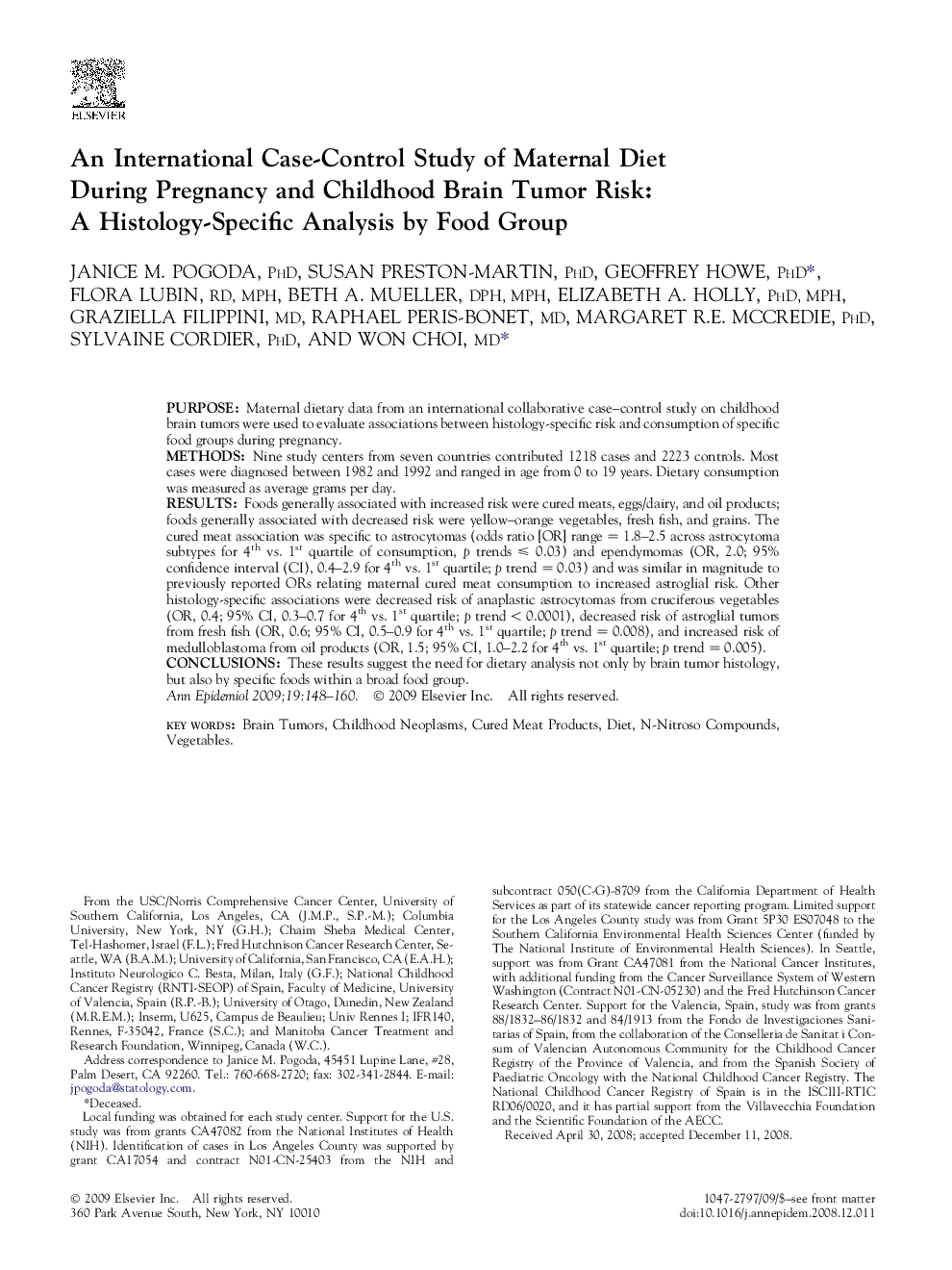| Article ID | Journal | Published Year | Pages | File Type |
|---|---|---|---|---|
| 6148653 | Annals of Epidemiology | 2009 | 13 Pages |
PurposeMaternal dietary data from an international collaborative case-control study on childhood brain tumors were used to evaluate associations between histology-specific risk and consumption of specific food groups during pregnancy.MethodsNine study centers from seven countries contributed 1218 cases and 2223 controls. Most cases were diagnosed between 1982 and 1992 and ranged in age from 0 to 19 years. Dietary consumption was measured as average grams per day.ResultsFoods generally associated with increased risk were cured meats, eggs/dairy, and oil products; foods generally associated with decreased risk were yellow-orange vegetables, fresh fish, and grains. The cured meat association was specific to astrocytomas (odds ratio [OR] range = 1.8-2.5 across astrocytoma subtypes for 4th vs. 1st quartile of consumption, p trends ⤠0.03) and ependymomas (OR, 2.0; 95% confidence interval (CI), 0.4-2.9 for 4th vs. 1st quartile; p trend = 0.03) and was similar in magnitude to previously reported ORs relating maternal cured meat consumption to increased astroglial risk. Other histology-specific associations were decreased risk of anaplastic astrocytomas from cruciferous vegetables (OR, 0.4; 95% CI, 0.3-0.7 for 4th vs. 1st quartile; p trend < 0.0001), decreased risk of astroglial tumors from fresh fish (OR, 0.6; 95% CI, 0.5-0.9 for 4th vs. 1st quartile; p trend = 0.008), and increased risk of medulloblastoma from oil products (OR, 1.5; 95% CI, 1.0-2.2 for 4th vs. 1st quartile; p trend = 0.005).ConclusionsThese results suggest the need for dietary analysis not only by brain tumor histology, but also by specific foods within a broad food group.
